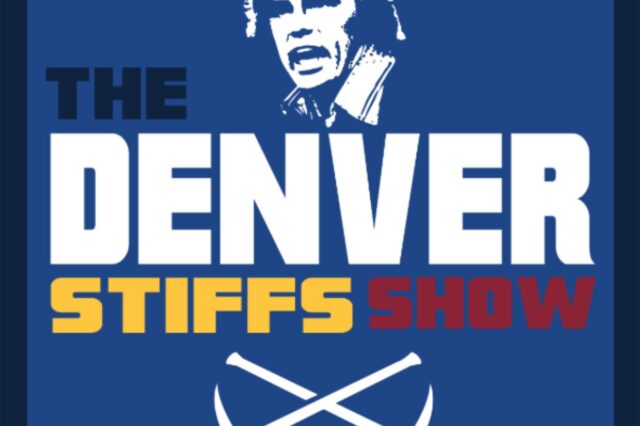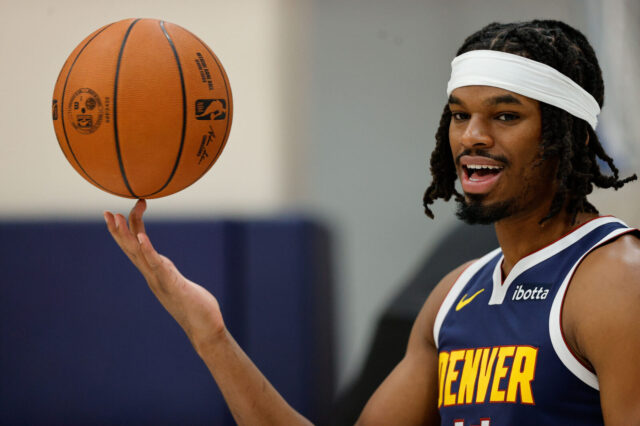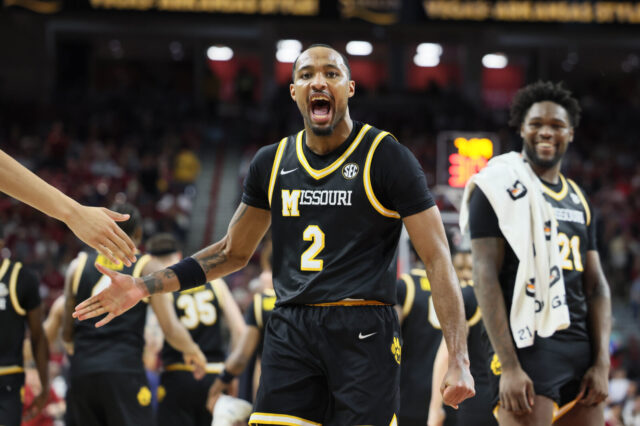The Nuggets lack of shooting and spacing has been the theme of their half court offense. Every issue that the team has scoring the basketball in the half court can be traced back to spacing in some way. You might be tired of hearing about it, but the issue won't resolve itself until the team adds a shooter, or a team finds another way to create efficient shots.
Catch and Shoot
For starters, the Nuggets have the 4th lowest FG% on catch-and-shoot opportunities. Those are shots off of assists where the shooter just catches the ball and shoots it, presumably in rhythm. What's worse, the Nuggets also have the 4th lowest effective FG% on shots that are "wide open," per SportVu, meaning shots without a defender within six feet of the shooter. At just 48.7% from the field, the Nuggets are not capitalizing on the roughly 13 possessions per game that the team generates wide open looks.
Some of this is about who is getting the open looks. Emmanuel Mudiay and Darrel Arthur are leading the team in "wide open" FGAs. More often than not this is by design of the defense. Teams are forcing shots into their hands by taking away everything else on the court and leaving those two open around the perimeter. Without a post threat, the rim protector is allowed to sit and guard the paint. Without enough catch-and-shoot threats, the wings are able to sag off and take away the mid-range. What's left are 17-foot jumpers from two of our least efficient jump shooters. This is why the Nuggets routinely find Arthur open on the perimeter, just on the edge of his comfort zone. Arthur and Mudiay can knock down that shot but teams know that they can wall off the more efficient options and force the Nuggets into the same shots over and over again.
Shooting from the corners
Corner threes are unique in the NBA in that they are usually indicative of a good offensive process. Rarely does a team run an action specifically to get a corner three. Instead, a successful offense will force the defense into a position where they must choose between protecting the paint or protecting the corner. That either/or predicament is at the heart of the modern NBA. Spread the defense out, get into the paint, and take whatever shot the defense gives you.
Going in to Monday's game, the Nuggets ranked 5th in FG% from the left corner, attempting shots from that corner at a league average rate of 3.1 per game. However, the Nuggets rank 30th in FG% from the right corner and attempt an astoundingly low 1.7 per game, good for 29th most frequent in the NBA. Despite the fairly small sample size of just 18 games, this trend probably isn't a coincidence. The Nuggets lack shooters and floor spacers to the extent that it is almost impossible to have a lineup on the court that can afford to place shooters in each corner. The low FG%, 16.1% from the right corner is bad but the low frequency of attempts is the real outlier. In simple terms, the Nuggets are not generating or making open looks in the area that stretches the defense the most.
Posting up
The Nuggets lack of efficiency from the corners has a trickle down effect on the rest of their scoring options. Without enough scoring threats to pull the defenses out, the paint gets crowded with defenders and makes it much more difficult to post up. It's difficult to post up in today's NBA anyway, even with great spacing, since the old illegal defense rule of the 1990's has been replaced with defensive three-seconds. By the new rules, defenders are allowed to trap the ball in the post from anywhere on the court in a way that wasn't allowed two decades ago. As a result, post players rarely get the type of one-on-one scoring chances that made dominant post players effective. Nonetheless, with proper spacing, teams are still able to utilize quick post-ups sprinkled into their offense to help create that either/or dilemma of protecting the paint or protecting the corners.
Surprisingly, the Nuggets lead the league in points per possession on post ups, scoring 1.03 points per possession. However, the Nuggets are 26th in post up frequency. Just 5.7% of their possessions end in a post up, per Synergy. That 1.03 PPP number is likely to decline as the season goes on. The Nuggets don't have a true post threat, especially with Jusuf Nurkic still recovering from knee surgery. In the rare instances that the Nuggets try to post up, teams choose to collapse onto the post player and force him to kick out to a three-point shooter that can't make them pay.
Driving to the hoop
The same effect occurs when the Nuggets attempt to drive into the lane, whether it be off of a cut, a pick-and-roll, or an isolation. The Nuggets have the 2nd lowest FG% on drives to the hoop, per SportVu, shooting just 37.6%. This has been an especially difficult scoring option for Emmanuel Mudiay, who is shooting just 33.9% on drives. He is also turning it over on drives just as frequently as he is generating assists.
Once again, this is the result of a trickle down effect from teams just packing the paint on the Nuggets, knowing that they can't make them pay. Without shooting threats on the perimeter, the Nuggets are failing to post-up and to drive to the basket efficiently.
What to do
There aren't any easy answers. The easiest way to open things up is to have enough shooters on the court or to have a dominant big man that demands a double team. The Nuggets have neither and so the only way to score points is to execute the offense perfectly. That is, the margin of error on every half-court possession is razor thin. The return of Joffrey Lauvergne from his injury should help with both the spacing on the wing and the offensive rebounding down low, but he may take some time to get his legs back. Ultimately, the team is going to have to develop or add some shooters to this roster.


